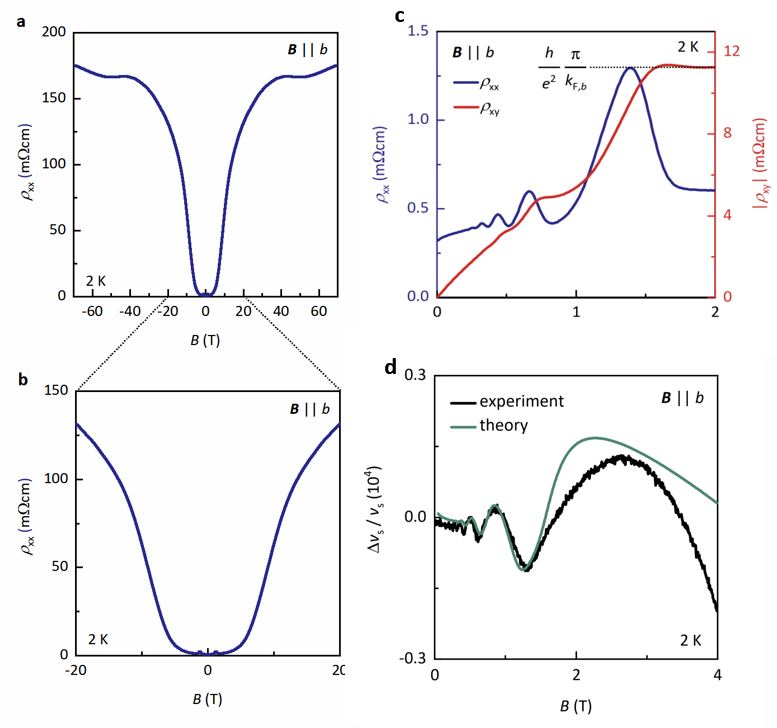Stanislaw Galeski, MPI CPfS Dresden and Sergei Zherlitsyn, HLD Dresden.
The quantum Hall effect (QHE) is traditionally considered to be a purely two-dimensional (2D) phenomenon. Recently, however, a three-dimensional (3D) version of the QHE was reported in the Dirac semimetal ZrTe5. Researchers from Germany, USA, and Sweden have now succeeded in identifying the mechanism behind the quasiquantization of the Hall effect (qQHE). A direct comparison of the experimental data with linear-response calculations based on an effective 3D Dirac Hamiltonian of ZrTe5 suggests that the quasi-quantization of the observed Hall response emerges from the interplay of low charge-carrier density and the Dirac character of the charge carriers. From previous charge-transport experiments, the 3D QHE was hypothetically proposed to arise from a magnetic-field-driven Fermi-surface instability with gapping of the Fermi surface and appearing of charge-density waves (CDW) in the quantum limit of ZrTe5. In our comprehensive study, we combined magnetization, ultrasound, magneto-transport, scanning-tunneling, and Raman spectroscopy experiments with advanced high-magnetic-field generation. Our investigations show no signatures of a Fermi-surface instability. Our results indicate that the state underlying the emergence of Hall plateaus in the quantum limit of ZrTe5 is, in fact, gapless and exhibits the behavior of a Fermi sea of a Landau-quantized 3D Dirac semimetal. Our findings establish the Hall effect in ZrTe5 as a truly threedimensional relative of the quantum Hall effect in 2D systems, and a prime candidate for the observation of relativistic chiral surface states.

Figure: Longitudinal electrical resistivity at 2 K as a function of magnetic field B applied along the b axis of the crystal (a) up to ±70 T and (b) up to ±20 T. (c) Low-field longitudinal and transversal Hall resistivity revealing a quasi-quantized Hall effect in ZrTe5. (d) Comparison between measured and calculated sound velocity in ZrTe5.
Origin of the quasi-quantized Hall effect in ZrTe5, S. Galeski, T. Ehmcke, R. Wawrzyńczak, P. M. Lozano, K. Cho, A. Sharma, S. Das, F. Küster, P. Sessi, M. Brando, R. Küchler, A. Markou, M. König, P. Swekis, C. Felser, Y. Sassa, Q. Li, G. Gu, M. v. Zimmermann, O. Ivashko, D. I. Gorbunov, S. Zherlitsyn, T. Förster, S. S. P. Parkin, J. Wosnitza, T. Meng, and J. Gooth, Nat. Commun. 12, 3197 (2021).
https://www.nature.com/articles/s41467-021-23435-y
Contact: Stanislaw.Galeski@cpfs.mpg.de






